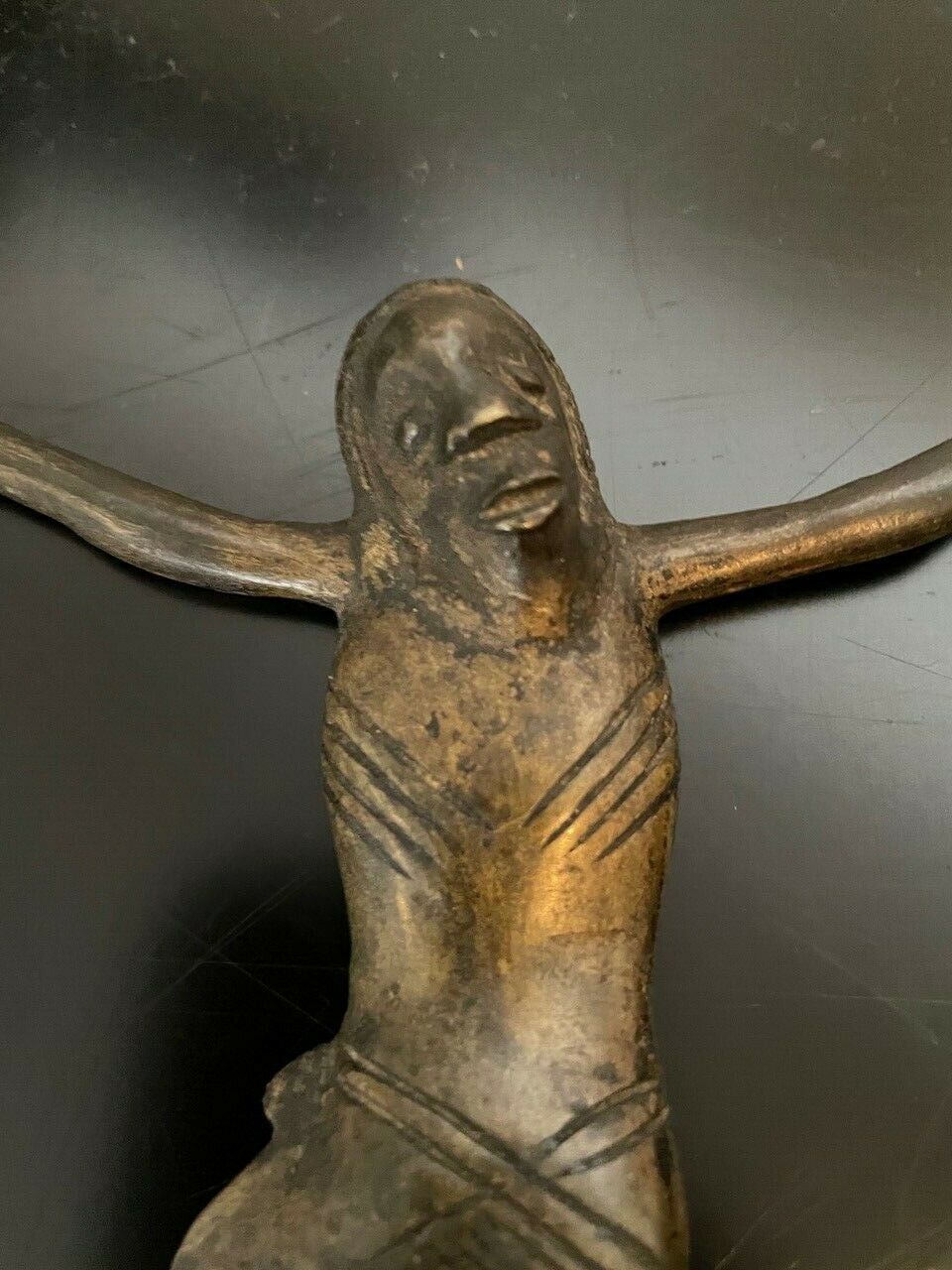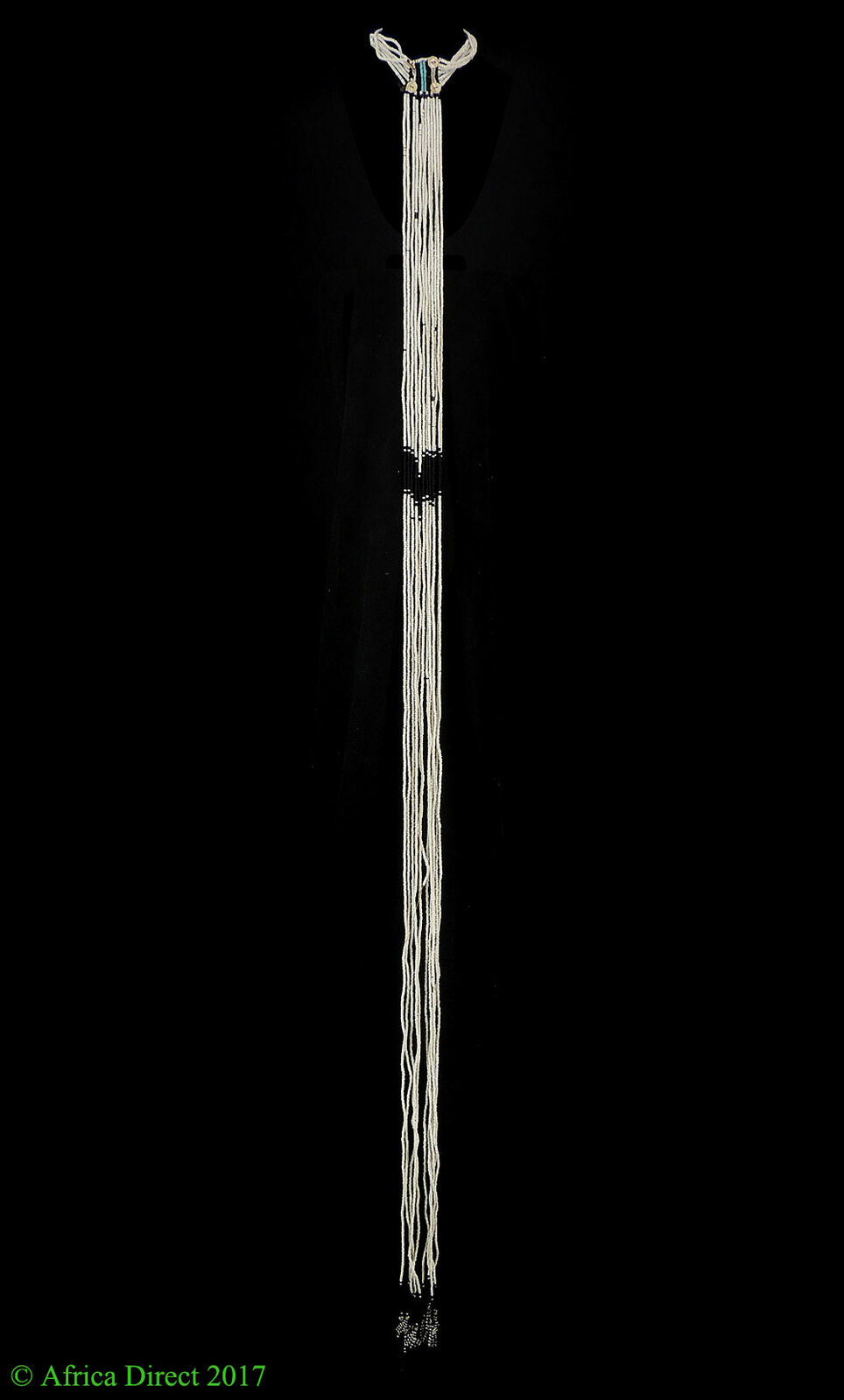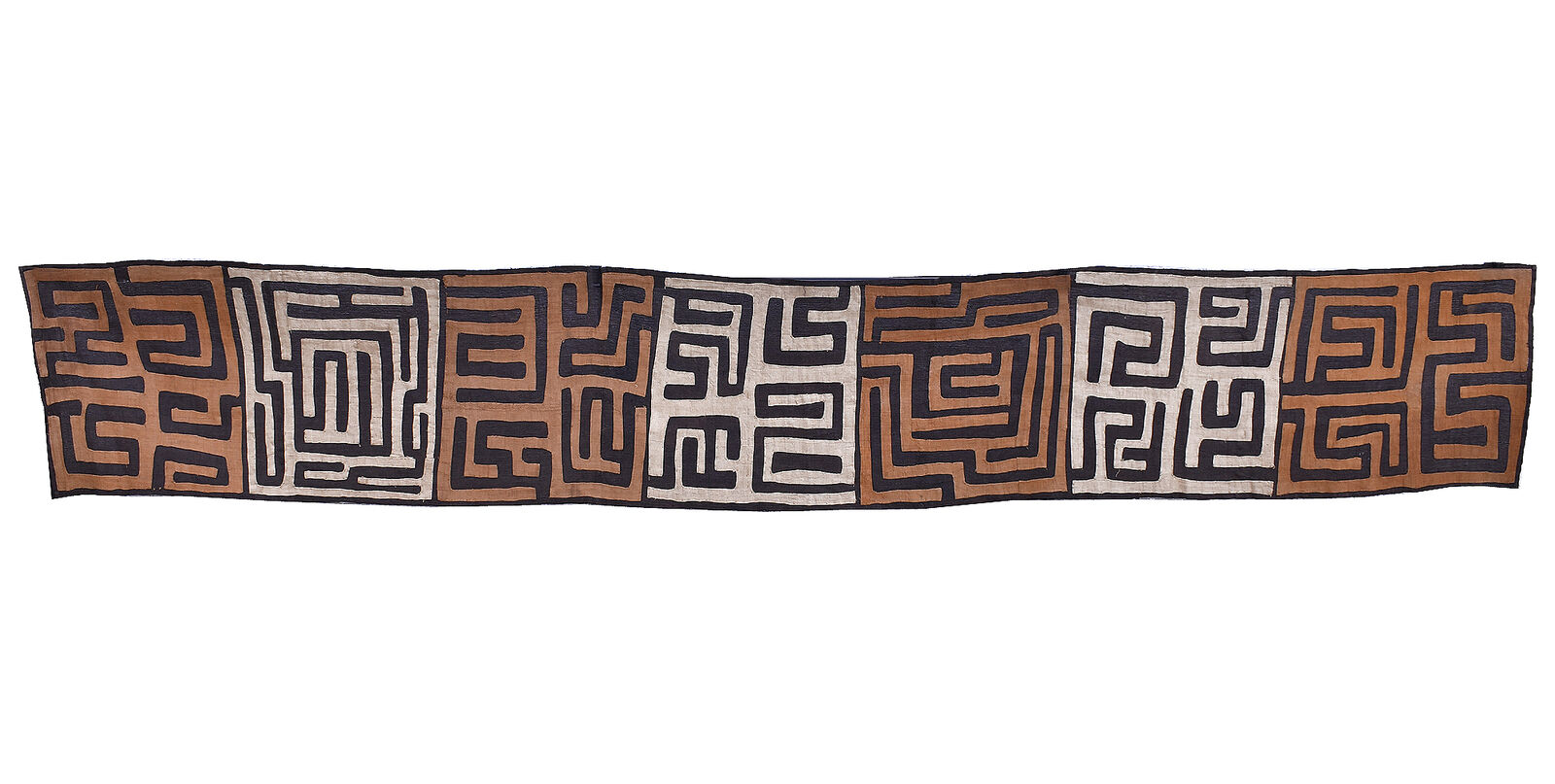-40%
17t century african art crucifix Nkangi Kiditu Congo Angola Black Africa Kongo
$ 924
- Description
- Size Guide
Description
Rare early 17th century sculpture from the Old Kingdom of Kongo(Black Africa), depicting the crucified Christ.This expressive image of the dying Christ, is head slightly moving towards His right shoulder, is directly but quietly looking at us, with a calm expression. The elongated stylised figure, with ribs defined by simple parallel lines, wears a short lention tied on the right. The limbs are slender and elongated, ending in flatenned feet and hands, pierced with holes for round headed pins.
Despite the existence of different expressions of other examples in private and museum collections, such as the Metropolitan Museum of Art, New York (inv. nr. 1999.295.7) or the Musée Royal de l'Afrique Centrale, Tervuren (inv. HO. 1955.9.18) and others, thishis
early 17th century african art's copper alloy crucifix identical to the crucifix from the collection of the National Museum of African Art, catalogued with object number 2005-06-106 (which was given to the museum by the Walt Disney World Co, a subsidary of The Walt Disney Company) and depicts a humanized depiction of the Christ, with His generous lips and quiet position of the head - without agony or restless calm - but reforced by the anatomic tension of the legs.
"Fifteenth-century missionaries and Portuguese emissaries aware of the scepters and staffs used as emblems of power among Kongo rulers introduced crucifixes into this local custom. Kongo artists continued creating images of Christ, which tend to have African features, even after the missionaries departed in the mid-18th century. The cross in Kongo cosmology represents the meeting of this world and the spirit world, which may account for the continued use of the crucifix."(National Museum of African Art label text)
16x14cm
Copper alloy
Good artistic expressiveness and good provenance.
From the former collection of Fernando Batalha, Arch.:
Fernando Batalha (1908-2012) was a Portuguese Architect
Set in Angola in 1935, he remained in Africa until the age of 83, working in architectural and urban planning offices and expanding his
research activity in ethnography, history and archeology.
Early after his arrival in Africa, Batalha started his activity with a well known collaboration in the design of the main pavilion of the Exhibition-Fair of
Angola, in 1938. That same year, the building of the Palácio do Comércio - initiated by the architect Sá de Menezes - was finally concluded and, with this public work, Batalha settled the tone to his career as an architect.
In 1939, he designed Luanda's "Grande Hotel", a construction prohibited by Vieira Machado, by then Minister of the Colonies, for presenting too modern lines.
Between 1940 and 1947, he was responsible for the Urbanization Office of Benguela and, during the 40's, carried out several works in Benguela and other cities in Angola, of which the reconstruction of the Government Palace (Benguela). In addition, the architect dedicated to the study and dissemination of urban heritage of Angola.
Fernando Batalha also published some books, such as
Urbanização de Angola
(1950),
P
ovoações de Interesse Histórico, Arqueológico e Turístico
/Settlements of Historical, Archaeological and Tourist Interest (1960), In
Em Defesa da Vila do Dondo
/ Defense of Vila do Dondo (1963),
Em Defesa do Património Histórico e Tradicional de Angola
/In Defense of Historical Heritage andTraditional of Angola (1963), among others.

















